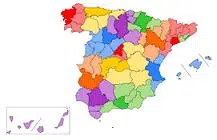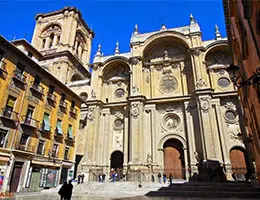 A word from Byzantine Greek ( dioíkēsis ) passed into late Latin ( dioecēsis ) before reaching our language as diocese . This is the name given to the territory over which a bishop has jurisdiction .
A word from Byzantine Greek ( dioíkēsis ) passed into late Latin ( dioecēsis ) before reaching our language as diocese . This is the name given to the territory over which a bishop has jurisdiction .
It should be remembered that a bishop is an ecclesiastical superior . Having jurisdiction, on the other hand, implies having the authority to administer or govern.
A diocese, therefore, is a district whose ecclesiastical administration is in charge of a bishop. This prelate is in charge of directing all the parishes that are part of his diocese. Several dioceses, in turn, can be grouped into ecclesiastical provinces .
The Catholic Church considers that each diocese is a part of the people of God , whose spiritual guidance is entrusted to the bishop. If the diocese, for any reason, lacks a bishop, it is called a vacant diocese .
Dioceses also have the role of training future members of the clergy . That is why they found seminaries where applicants complete the studies that allow them to become ordained.
The Catholic Church of Spain , for example, is made up of sixty dioceses, each under the jurisdiction of a bishop or archbishop . The Spanish dioceses, simultaneously, are grouped into fourteen ecclesiastical provinces.
Only fifty-six of these dioceses are headed by a bishop, since the remaining fourteen are actually archdioceses, and therefore are led by different archbishops. On the other hand, there are two personal jurisdictions that cover the entire territory of the nation, although without their own territory.
Below we will see some of the dioceses and archdioceses of Spanish territory, with their date of creation and other data, such as eventual deletions and reactivations:
* Diocese of Barcelona, created in the year 400 and converted into an archdiocese in 1964. In 2004, it was elevated to a metropolitan archdiocese;
* Diocese of Sant Feliú de Llobregat, whose creation took place in 2004, dismembered from the Metropolitan Archdiocese of Barcelona;
* Diocese of Terrasa, originating in 2004 and with the same provenance as the previous one;
* Metropolitan Archdiocese of Burgos, created in the 3rd century with the name of Oca , renamed in 1075 with Burgos instead of Oca and finally elevated to metropolitan archdiocese in 1574;
* Diocese of Bilbao, which was created in 1949 as the dismemberment of three other dioceses;
* Osma-Soria Diocese, emerged in the year 600 with the name of Osma and renamed a century and a half later;
* Diocese of Palencia, which spent more than three centuries suppressed until it was reestablished in the year 1035;
* Diocese of Vitoria, whose creation dates back to 1861 as the dismemberment of an archdiocese and three dioceses;
 * Metropolitan Archdiocese of Granada, initially emerged as a diocese, in 1437, and elevated in 1492 to its current title;
* Metropolitan Archdiocese of Granada, initially emerged as a diocese, in 1437, and elevated in 1492 to its current title;
* Diocese of Almería, from 1492, after two suppressions throughout almost a millennium of existence, since 300;
* Diocese of Cartagena, from 100;
* Diocese of Guadix, created in the 15th century.
In the Roman Empire , an administrative division made up of several provinces is called a diocese. The vicar ( vicarius ) was the governor of the diocese, being under subordination to the prefect of the praetorium.
It is worth mentioning that Roman dioceses are usually called civil dioceses to avoid confusion with religious dioceses. Both constituencies have nothing to do with each other.
There are a large number of dioceses internationally that have higher education centers. The Catholic university , for example, was created linked to the diocesan seminary to support the training of the clergy. In any case, the Catholic university is also a source of services of great importance for the nation in which they are located or even for their continent, and in the world there are many that make considerable contributions to both science and culture.
